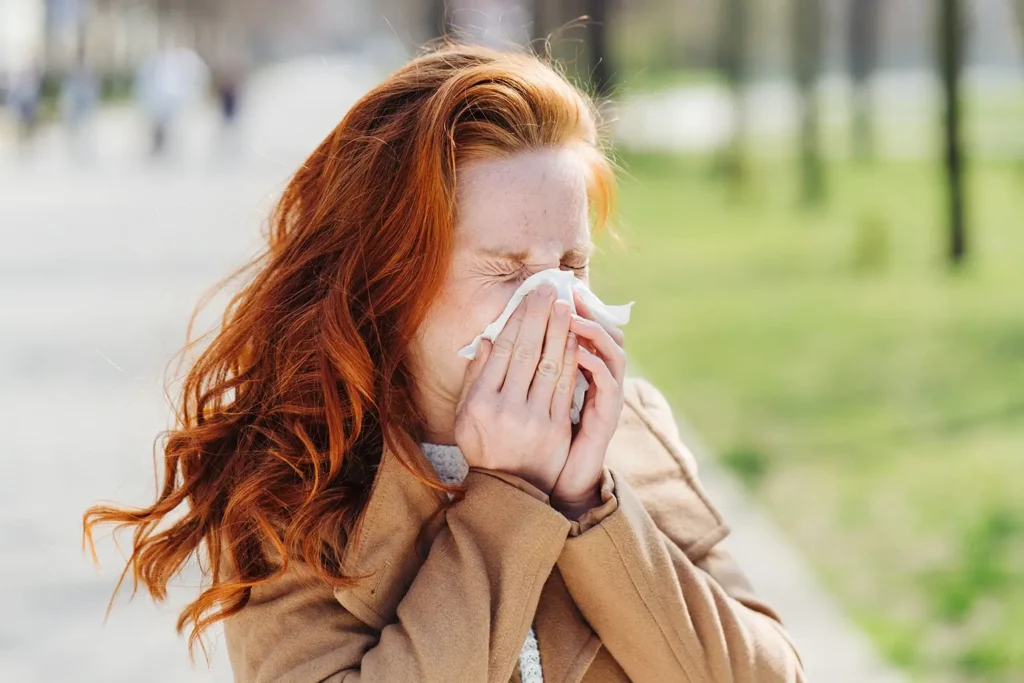Hay fever, or allergic rhinitis, happens when your immune system overreacts to pollen and other airborne substances. This causes symptoms like sneezing, a runny nose, itchy eyes, and congestion. In the UK, around 13 million people, or 20% of the population, deal with hay fever every year.
When is hay fever season?
While most people can’t wait for the winter months to finally be over, people that suffer from hay fever are usually bracing themselves for months of red eyes and runny noses. It turns what should be the nicest (and warmest) months of the year into a balancing act of limiting your exposure to the outdoors, while juggling different treatments when you dare open the front door.
If you’ve only recently developed hay fever, or you simply need a reminder, here’s a breakdown of hay fever season for people in the UK:
- March to May: Trees blossom and pollen increases after winter
- May to July: Grass pollen becomes the main hay fever cause
- June into Autumn: Weeds grow faster and cause more pollen
If you have hay fever, it’s important to remember that you may not be allergic to all different types of pollen. Most hay fever sufferers have a reaction to grass pollen, however it is possible to have an allergy to more than one type of pollen.
What are the symptoms of hay fever?
If you’re dealing with any of the following symptoms, it may be that you have hay fever:
- A runny (often like water) or blocked nose
- Constant sneezing and coughing (especially when you’re outside)
- Red, itchy eyes
- Itchy, irritated throat and mouth
- Feeling fatigued
- Headaches
How to treat hay fever at home?
Though there’s no cure for hay fever, it is possible to reduce your symptoms through simple management techniques and over-the-counter medicines, so you can get outside and start enjoying the sunshine.
Here’s our best tips for dealing with your hay fever:
Put a small bit of petroleum jelly around your nostrils
Applying a small bit of petroleum jelly (like Vaseline) around your nostrils can help trap pollen before it enters and irritates your body. It does not need to be a visible amount to be effective, so long as you can feel it’s there.
Keep your windows and doors closed
During high pollen days, keep your windows and doors shut as much as possible to prevent pollen from entering your home.
Install pollen filters
Install pollen filters in the air vents of your car and a HEPA filter in your vacuum cleaner. These can help to trap pollen before it gets to you.
Shower and change clothes are going outside
Showering and changing your clothes when you get back home removes the pollen from your skin and hair, and also prevents it from spreading around your home.
Dry your washing inside
Avoid drying clothes outside during high pollen days. Pollen can stick to your laundry, bringing it into your home.
Use an over-the-counter medicine
Using antihistamines and steroidal nasal sprays can help reduce your symptoms significantly, and allow you to enjoy the outdoors. However, it’s important to check which type of antihistamine you’re using – as some will make you feel drowsy and shouldn’t be used while driving or operating machinery.

